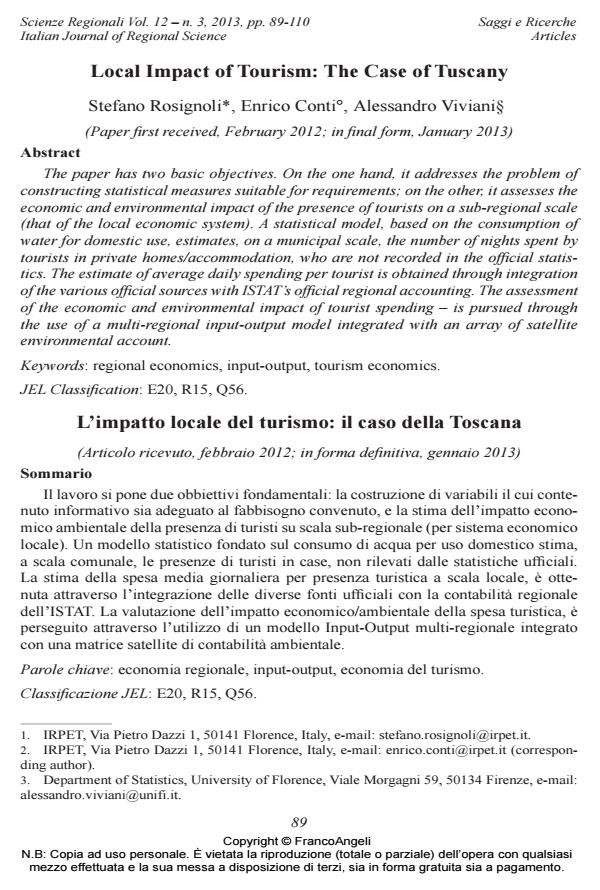Local Impact of Tourism: The Case of Tuscany
Journal title SCIENZE REGIONALI
Author/s Stefano Rosignoli, Enrico Conti, Alessandro Viviani
Publishing Year 2013 Issue 2013/3
Language Italian Pages 21 P. 89-109 File size 490 KB
DOI 10.3280/SCRE2013-003004
DOI is like a bar code for intellectual property: to have more infomation
click here
Below, you can see the article first page
If you want to buy this article in PDF format, you can do it, following the instructions to buy download credits

FrancoAngeli is member of Publishers International Linking Association, Inc (PILA), a not-for-profit association which run the CrossRef service enabling links to and from online scholarly content.
The paper has two basic objectives. On the one hand, it addresses the problem of constructing statistical measures suitable for requirements; on the other, it assesses the economic and environmental impact of the presence of tourists on a sub-regional scale (that of the local economic system). A statistical model, based on the consumption of water for domestic use, estimates, on a municipal scale, the number of nights spent by tourists in private homes/accommodation, who are not recorded in the official statistics. The estimate of average daily spending per tourist is obtained through integration of the various official sources with ISTAT’s official regional accounting. The assessment of the economic and environmental impact of tourist spending - is pursued through the use of a multi-regional input-output model integrated with an array of satellite environmental account.
Il lavoro si pone due obbiettivi fondamentali: la costruzione di variabili il cui contenuto informativo sia adeguato al fabbisogno convenuto, e la stima dell’impatto economico ambientale della presenza di turisti su scala sub-regionale (per sistema economico locale). Un modello statistico fondato sul consumo di acqua per uso domestico stima, a scala comunale, le presenze di turisti in case, non rilevati dalle statistiche ufficiali. La stima della spesa media giornaliera per presenza turistica a scala locale, è ottenuta attraverso l’integrazione delle diverse fonti ufficiali con la contabilità regionale dell’ISTAT. La valutazione dell’impatto economico/ambientale della spesa turistica, è perseguito attraverso l’utilizzo di un modello Input-Output multi-regionale integrato con una matrice satellite di contabilità ambientale.
Keywords: Regional economics, input-output, tourism economics.
Jel codes: E20, R15, Q56.
Stefano Rosignoli, Enrico Conti, Alessandro Viviani, Local Impact of Tourism: The Case of Tuscany in "SCIENZE REGIONALI " 3/2013, pp 89-109, DOI: 10.3280/SCRE2013-003004